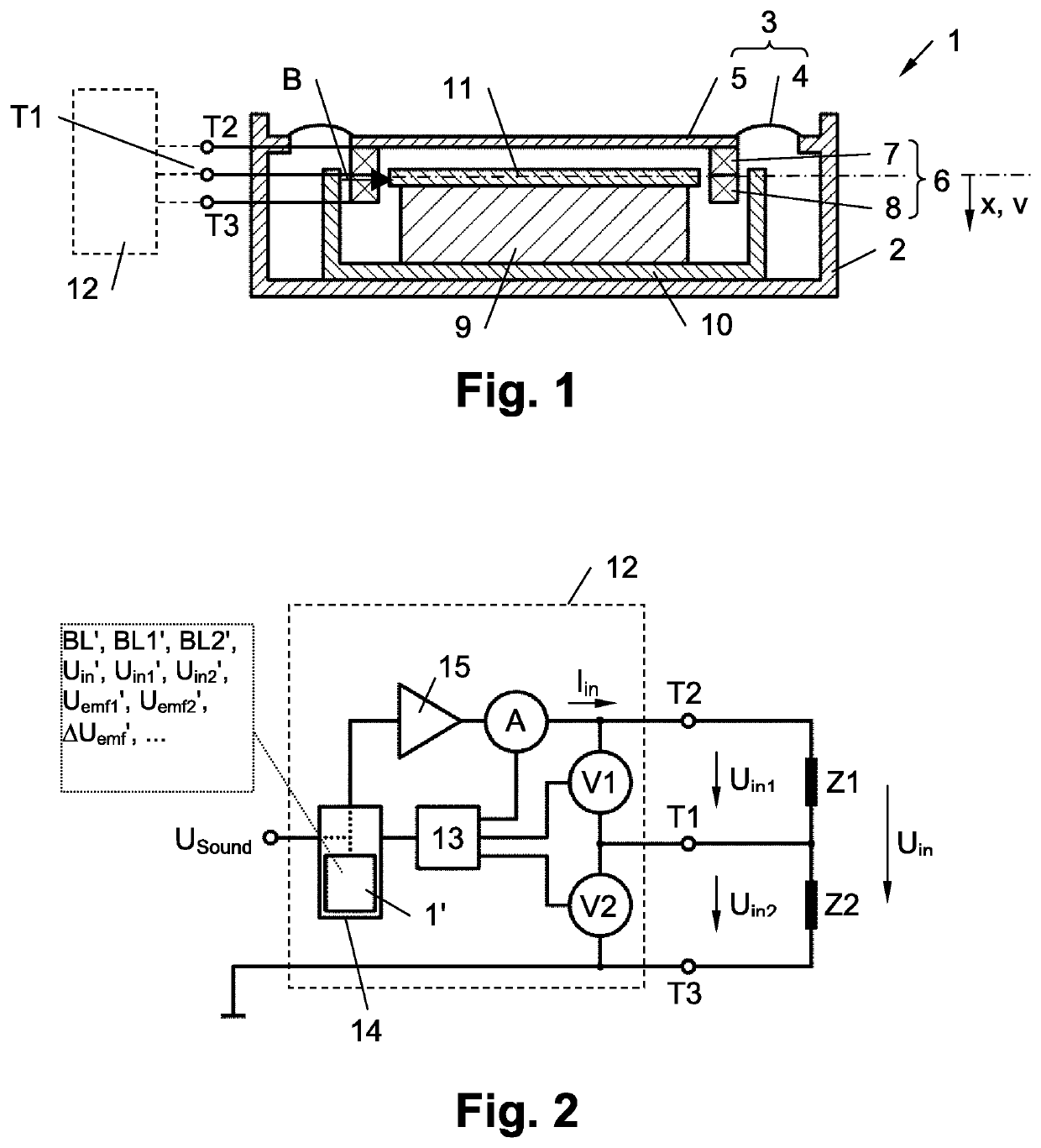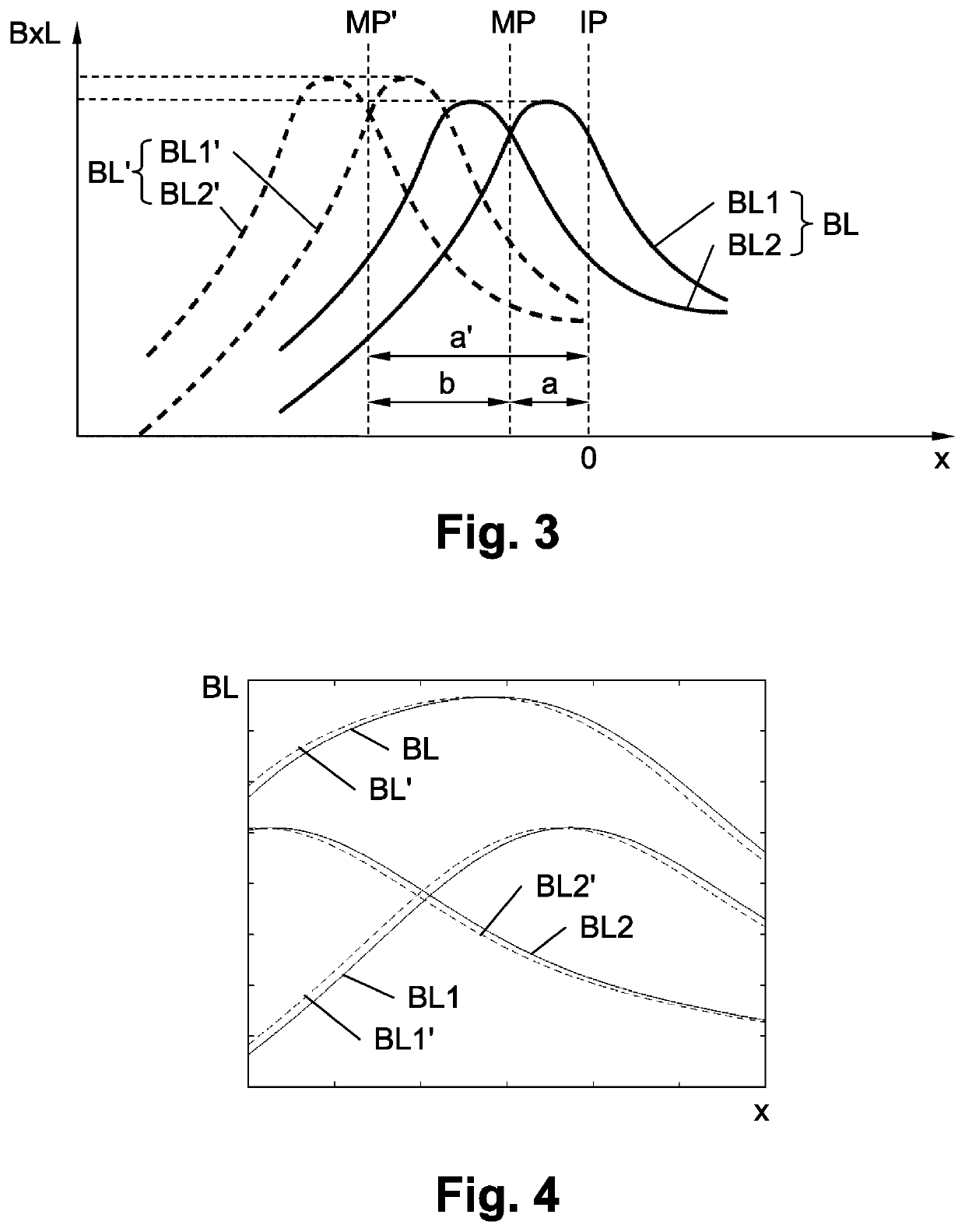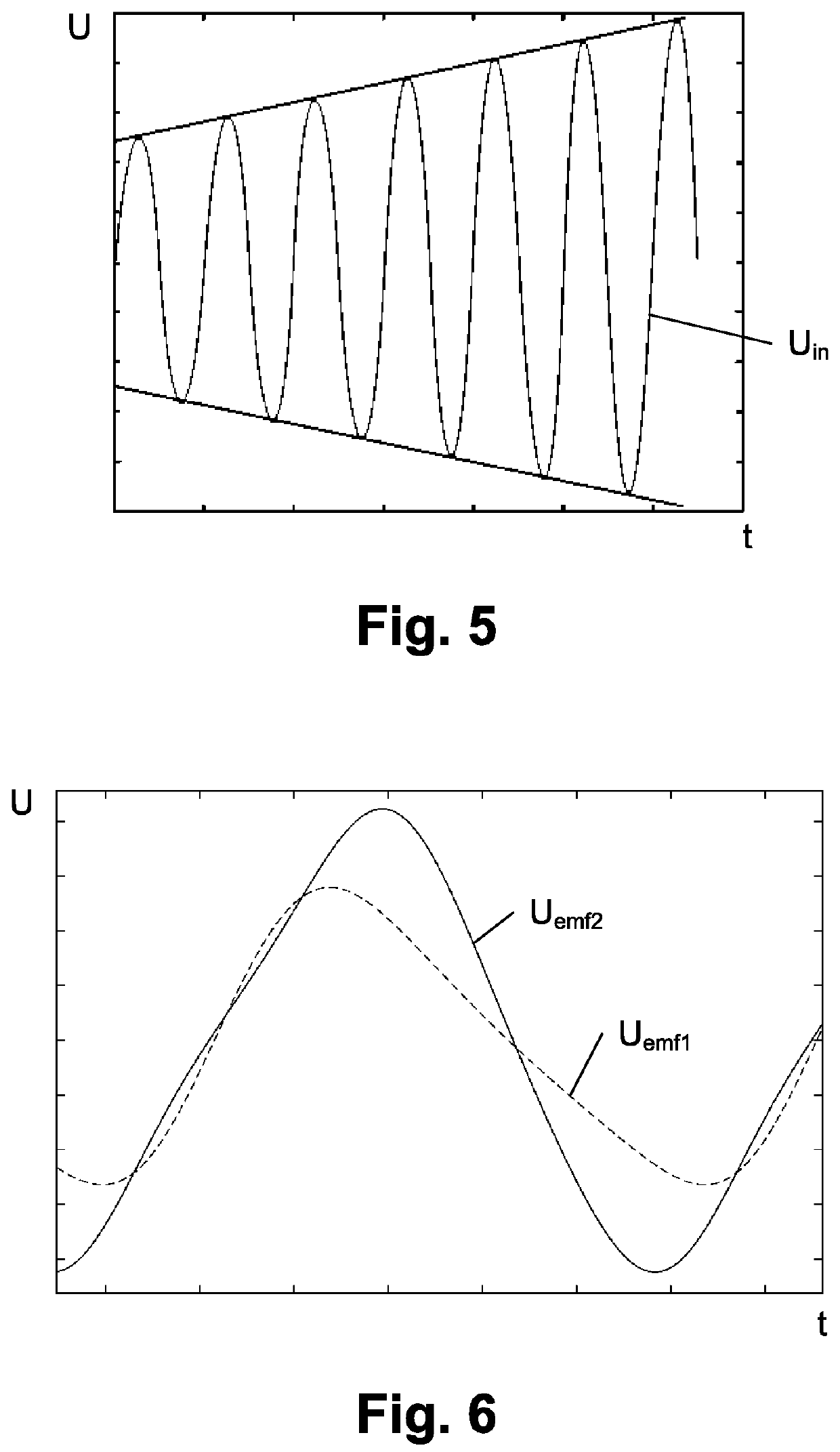Method and Electronic Circuit for Improving a Driving Force Function of an Electrodynamic Acoustic Transducer
a technology electronic circuits, which is applied in the direction of electrical transducers, frequency response correction, instruments, etc., can solve the problems of distortion of output sound and even damage of electrodynamic acoustic transducers, and achieve the effect of comparably easy and also precise determination of shift for driving force functions bl(x). and bl(x)
- Summary
- Abstract
- Description
- Claims
- Application Information
AI Technical Summary
Benefits of technology
Problems solved by technology
Method used
Image
Examples
embodiment 1
[0124]In a first preferred embodiment, a first input signal Uin, which is a sine signal with a varying magnitude, is applied to the voice coils 7, 8 of the real electrodynamic acoustic transducer 1, and a second input signal Uin′, which is a sine signal with a varying magnitude as well, is applied to (the voice coils of) the model 1′ of the electrodynamic acoustic transducer 1 in a first step a). FIG. 5 shows an example of such a first input signal Uin (and equally of a second input signal Uin′). The magnitude particularly may change linearly over time, in steps or sample by sample. In detail, the input signals Uin, Uin′ should ensure that the excursion x of the membrane 3 reaches or even exceeds the magnetic zero position MP. In other words, the maximum excursion x of the membrane 3 shall correspond to the offset a of the real electrodynamic transducer or even exceed the offset a (see FIG. 3).
[0125]It should be noted that the magnitude change of the input signals Uin, should be suf...
embodiment 2
[0142]In a second embodiment, which is similar to the first embodiment, the scaling factor k is determined in a slightly different way.
[0143]In contrast to the first embodiment, the first input signal U1 applied to the voice coils 7, 8 of the electrodynamic acoustic transducer 1 in step a) is a sine signal with constant magnitude and not a sine signal with a varying magnitude. Nevertheless, the second input signal Uin′ applied to the model 1′ of the electrodynamic acoustic transducer 1 in step a) again is a sine signal with a varying magnitude. Beneficially, the first input signal Uin and the second input signal Uin′ are sinus signals at the resonant frequency of the electrodynamic acoustic transducer 1 again.
[0144]Shifting the modeled driving force function BL′, BL1′, BL2′ in step c) is done in the same way as in the embodiment 1. In particular it should be taken care of that step c) is executed at the same or at least comparable membrane excursions x in the real electrodynamic aco...
PUM
 Login to View More
Login to View More Abstract
Description
Claims
Application Information
 Login to View More
Login to View More - R&D
- Intellectual Property
- Life Sciences
- Materials
- Tech Scout
- Unparalleled Data Quality
- Higher Quality Content
- 60% Fewer Hallucinations
Browse by: Latest US Patents, China's latest patents, Technical Efficacy Thesaurus, Application Domain, Technology Topic, Popular Technical Reports.
© 2025 PatSnap. All rights reserved.Legal|Privacy policy|Modern Slavery Act Transparency Statement|Sitemap|About US| Contact US: help@patsnap.com



